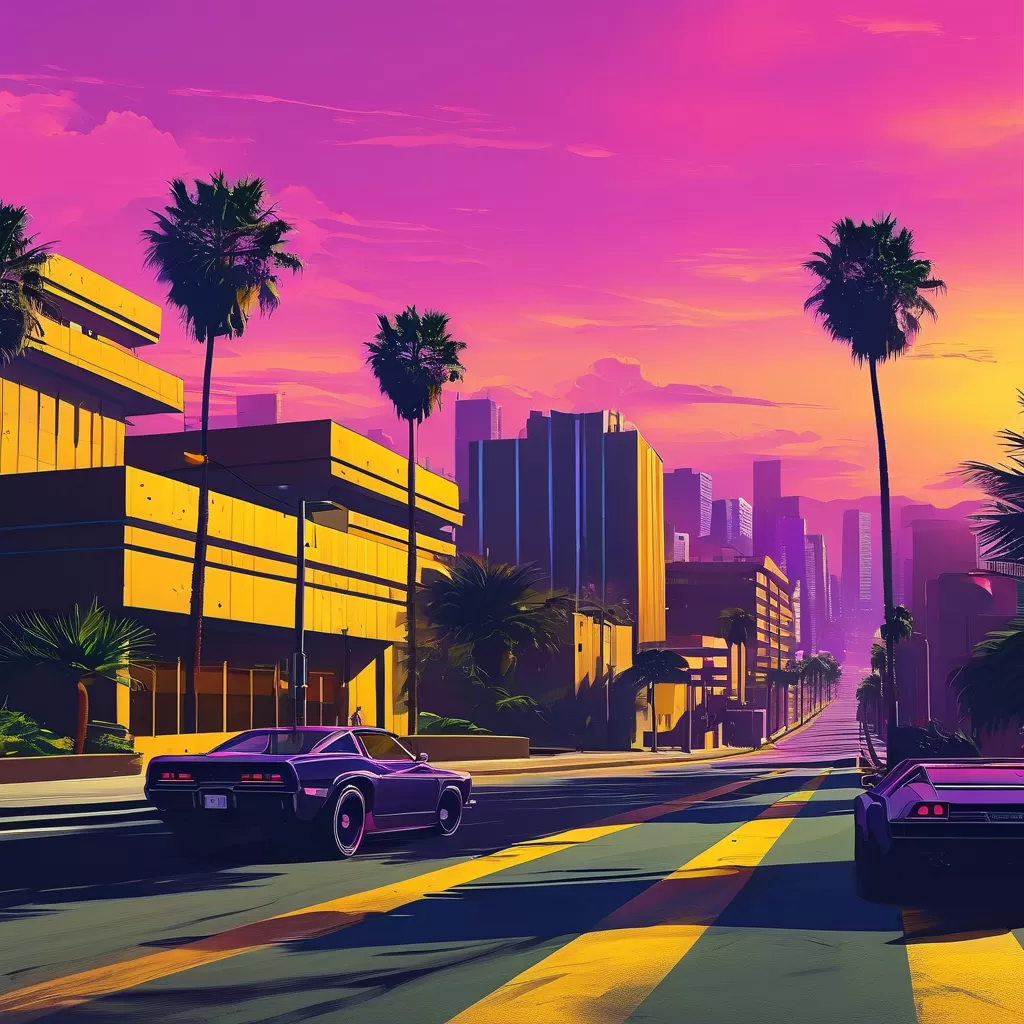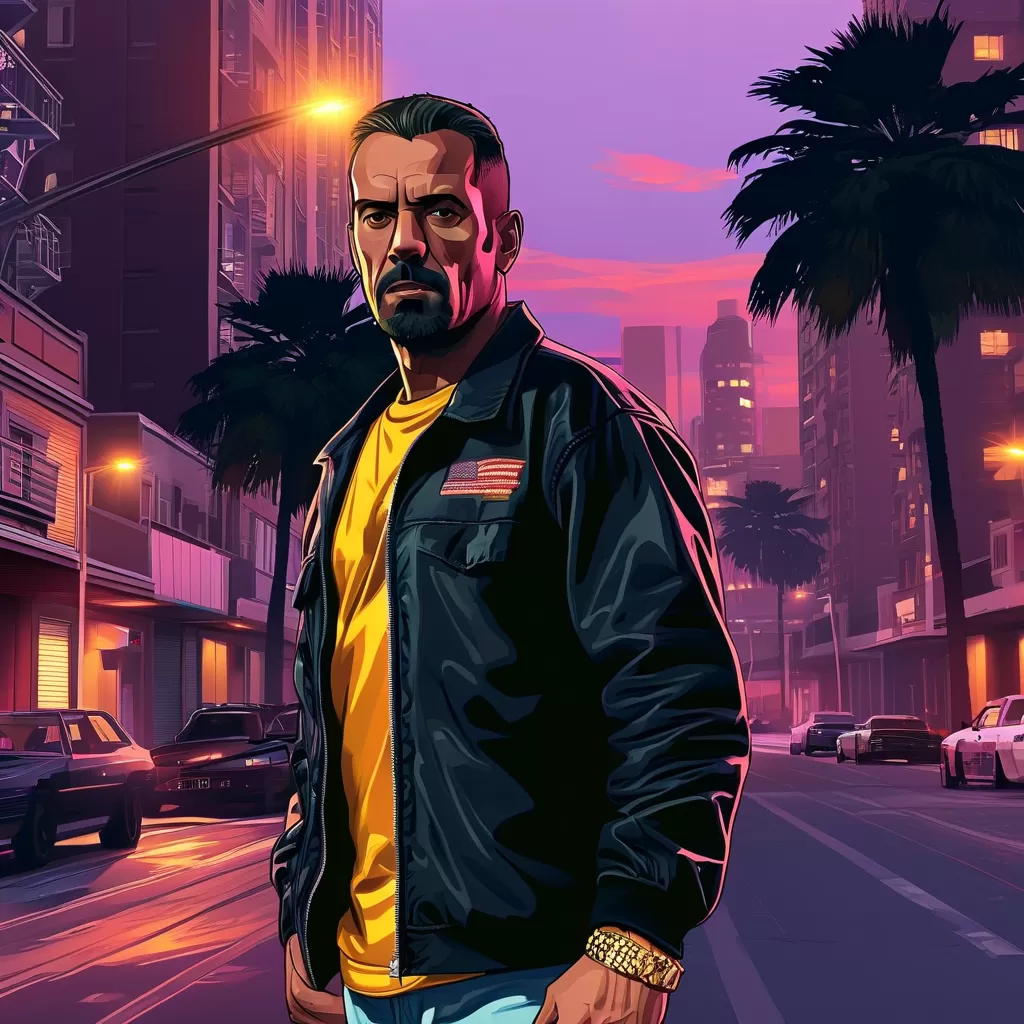Table of Contents
GTA San Andreas: Revolutionizing Open Worlds, Still a Player’s Favorite
Five years after Carl Johnson fled the pressures of life in San Andreas – a state teetering on the brink of collapse, plagued by gang warfare, rampant drugs, and systemic corruption – a seismic shift occurred in the world of video games. Grand Theft Auto: San Andreas, released a decade ago in 2004, didn’t just arrive; it fundamentally altered the landscape of what an open-world game could be. It wasn’t merely an expansion of the familiar Grand Theft Auto formula; it was a statement, a sprawling, detailed, and deeply personal journey across a state-sized map that captured the imagination of players worldwide. While subsequent entries in the franchise have pushed technical boundaries further, GTA San Andreas remains an enduring titan, widely regarded as one of the best, most influential, and funniest games ever created, a true player’s favorite that continues to resonate with gamers decades later.
The Vast, Vivid World: A Quantum Leap Forward
Before GTA San Andreas, open worlds were impressive, but GTA San Andreas redefined the term. Developed by Rockstar North and published by Rockstar Games, the game presented a staggering, meticulously crafted open world covering the entirety of the fictional state of San Andreas, encompassing three distinct and vibrant major cities: Los Santos (a gritty, sprawling parody of Los Angeles), San Fierro (a sun-drenched coastal paradise), and Las Venturas (a Vegas-style oasis shimmering with excess). This geographical scope alone was monumental, offering players a sense of scale previously unseen in a Grand Theft Auto game.
Enhanced Visual Fidelity and Environmental Detail
The Grand Theft Auto series had already established a reputation for detailed environments, but GTA San Andreas elevated this significantly. Cities overflowed with life, boasting towering skyscrapers, sprawling freeways, dense suburban neighborhoods, desolate highways, and idyllic countryside areas. The attention to detail was remarkable – from the flickering neon signs of Los Santos’ nightlife to the dusty, sun-baked streets of San Fierro, every location felt lived-in and unique. The visual fidelity, for its time, was a significant leap, utilizing then-revolutionary technology (including the custom Rockstar Engine) to render vast landscapes and populate them with thousands of non-player characters (NPCs) engaging in their daily routines. This wasn’t just background scenery; it was the foundation of the game’s emergent storytelling.
Dynamic Weather Systems and Time-of-Day Cycles
Adding to the immersive realism were dynamic weather systems and time-of-day cycles. Players could experience driving through Los Santos during a scorching Los Santos summer, then find themselves navigating San Fierro during a sudden San Andreas winter, complete with blizzards and sub-zero temperatures. Nighttime brought dramatic lighting changes, atmospheric fog, and unique events tied to the cover of darkness. This constant environmental variation ensured that the world of San Andreas wasn’t static; it reacted and changed, influencing gameplay mechanics like visibility and car handling, further deepening the feeling of being in a living, breathing entity.
Iconic Vehicles and Physics
San Andreas wasn’t just about stunning visuals; it featured an incredibly diverse and extensive vehicle roster, far exceeding its predecessors. From muscle cars and helicopters to mopeds, tankers, and even futuristic vehicles, the customization options were vast. Crucially, the vehicle physics remained Rockstar’s signature element. Cars felt heavy and responsive, drifting had a satisfying weight to it, and water physics were notoriously challenging, requiring skill to navigate – a feature many players still grumble about today but undeniably added a layer of challenge and realism. The ability to freely drive, park, and explore this vast world in a multitude of ways was a core pillar of the experience.
 GTA San Andreas: The Game That Defined a Generation Grand Theft Auto: San Andreas – The Unforgettable Journey That Revolutionized Open-World Gaming
GTA San Andreas: The Game That Defined a Generation Grand Theft Auto: San Andreas – The Unforgettable Journey That Revolutionized Open-World Gaming
A Story of Escape, Redemption, and Unrelenting Chaos
While the world was undeniably a key selling point, GTA San Andreas‘ enduring appeal stems significantly from its compelling narrative, driven by the player character, Carl Johnson, or CJ. The story masterfully blends the familiar gang warfare and crime elements of the Grand Theft Auto universe with deeply personal, relatable motivations. CJ’s journey is one of escape, disillusionment, and ultimately, a reluctant return to the streets of San Andreas to save his family and his dying mother.
CJ: A Groundbreaking Protagonist
Unlike previous protagonists in the series, CJ wasn’t just a blank slate for player projection. He was a fully realized character with a history, flaws, and a distinct personality. His voice acting, delivered with characteristic grit and nuance by Chris Burnett, brought depth and pathos to his struggles. Players invested in CJ’s quest not just for the typical heists and missions, but because of his personal stakes – the need to protect his siblings, the desire to provide for his family, and the internal conflict between his peaceful aspirations and the violent reality he must confront. This focus on character-driven narrative was groundbreaking for the time and set a new standard for protagonists in action-adventure games.
A Complex, Multi-Faceted Plot
The plot unfolds across the three cities, presenting a complex tapestry of missions, subplots, and factions. CJ doesn’t just fight generic thugs; he navigates the treacherous waters of the Ballas, Vagos, and Varrios gangs, each with their own territories, aesthetics, and motivations. Along the way, he encounters iconic figures like Big Smoke (a loyal friend turned ruthless mob boss), Woozie (a formidable female rival), and the mysterious R*aper (later revealed as the mastermind behind the game’s overarching conspiracy). The story masterfully balances its signature Grand Theft Auto moments – car chases, shootouts, heists – with moments of genuine emotional weight, humor, and social commentary, tackling themes of poverty, corruption, family, and the destructive nature of gang life.
Iconic Missions and Memorable Moments
From the hilarious intro sequence set in a suburban garage, complete with a bizarrely funny animation, to the climactic confrontation at the Stardock Entertainment building, GTA San Andreas is littered with iconic missions and unforgettable moments. Players remember the intense “Ballad of Badd Boy” sequence, the heart-wrenching moment CJ visits his mother in the hospital, the chaos of the “Crimson Six” mission, and the sheer audacity of the final “Bank Heist” which sees CJ infiltrating a casino and escaping amidst a hail of bullets and explosions. These moments, often fueled by exceptional voice work and memorable dialogue, cemented CJ’s story as one of the most beloved in gaming history.
 GTA San Andreas: The Ultimate Open-World Adventure That Changed Gaming
GTA San Andreas: The Ultimate Open-World Adventure That Changed Gaming
The Soundtrack, Multiplayer, and Lasting Legacy
GTA San Andreas wasn’t just about its single-player experience; its cultural impact was significantly amplified by its soundtrack and its revolutionary multiplayer component.
An Unforgettable Soundtrack
The game’s soundtrack, featuring collaborations with artists like Dr. Dre, Snoop Dogg, and Faith Evans, became legendary. Tracks like “Candy Shop,” “I Get High,” and “Shook” defined an era and remain hugely popular today. The integration of music wasn’t just background noise; it was woven into the fabric of the game’s identity, reflecting the hip-hop and R&B culture that heavily influenced the game’s setting and characters. Many players even burned their original CDs to create custom soundtracks, further embedding the game’s musical legacy into popular culture. This was more than just licensed music; it was a cultural statement.
The Birth of Online Multiplayer
While online play existed in previous Grand Theft Auto titles, GTA San Andreas‘s multiplayer mode, “Freeroad,” was arguably more influential. It allowed players to engage in deathmatch-style battles, create and customize their own characters, and compete for territory and dominance. Crucially, it was free-to-play, removing a major barrier to entry and enabling massive player bases. Although perhaps less refined than later iterations, GTA San Andreas‘ multiplayer laid the groundwork for the massive online communities that would become central to the Grand Theft Auto franchise, proving that persistent online worlds could thrive alongside compelling single-player narratives.
Technical Achievements and Enduring Popularity
Technically, GTA San Andreas was a marvel. Running on the Rockstar Engine, it pushed the boundaries of what was possible on the PlayStation 2 and Xbox at the time, with its massive world, detailed graphics, and complex AI. While some aspects, like the notoriously difficult water physics, have aged somewhat poorly, its overall impact on game development was undeniable. It demonstrated the potential of open-world games to tell complex stories and offered unparalleled freedom to players.
Decades later, <strong
